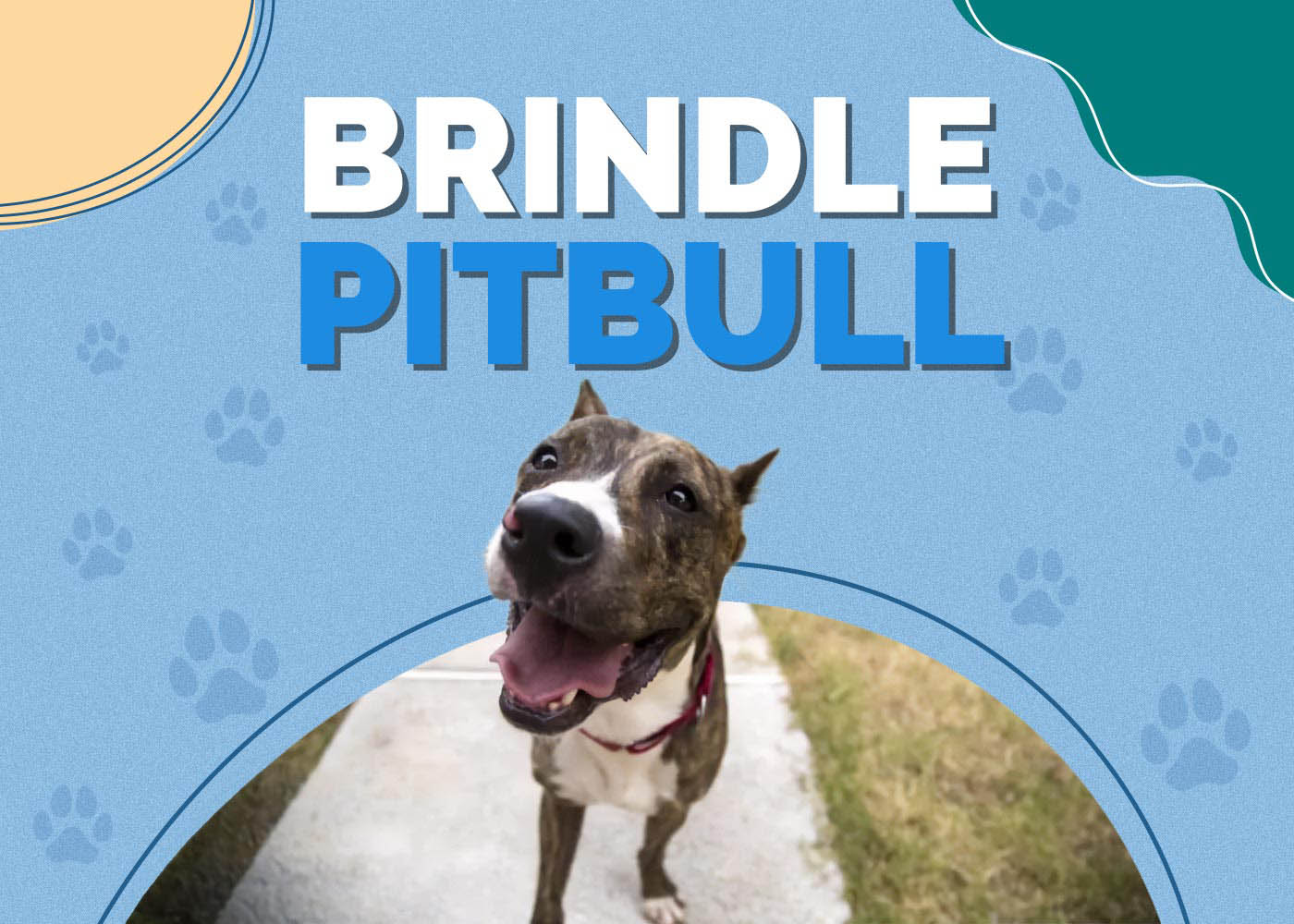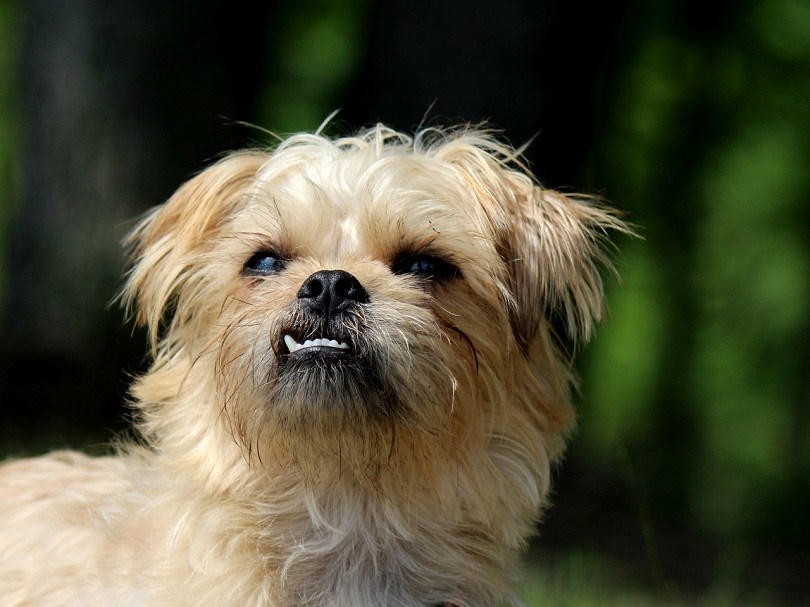Cane Corso Vs Great Dane: How Do They Compare?

Updated on
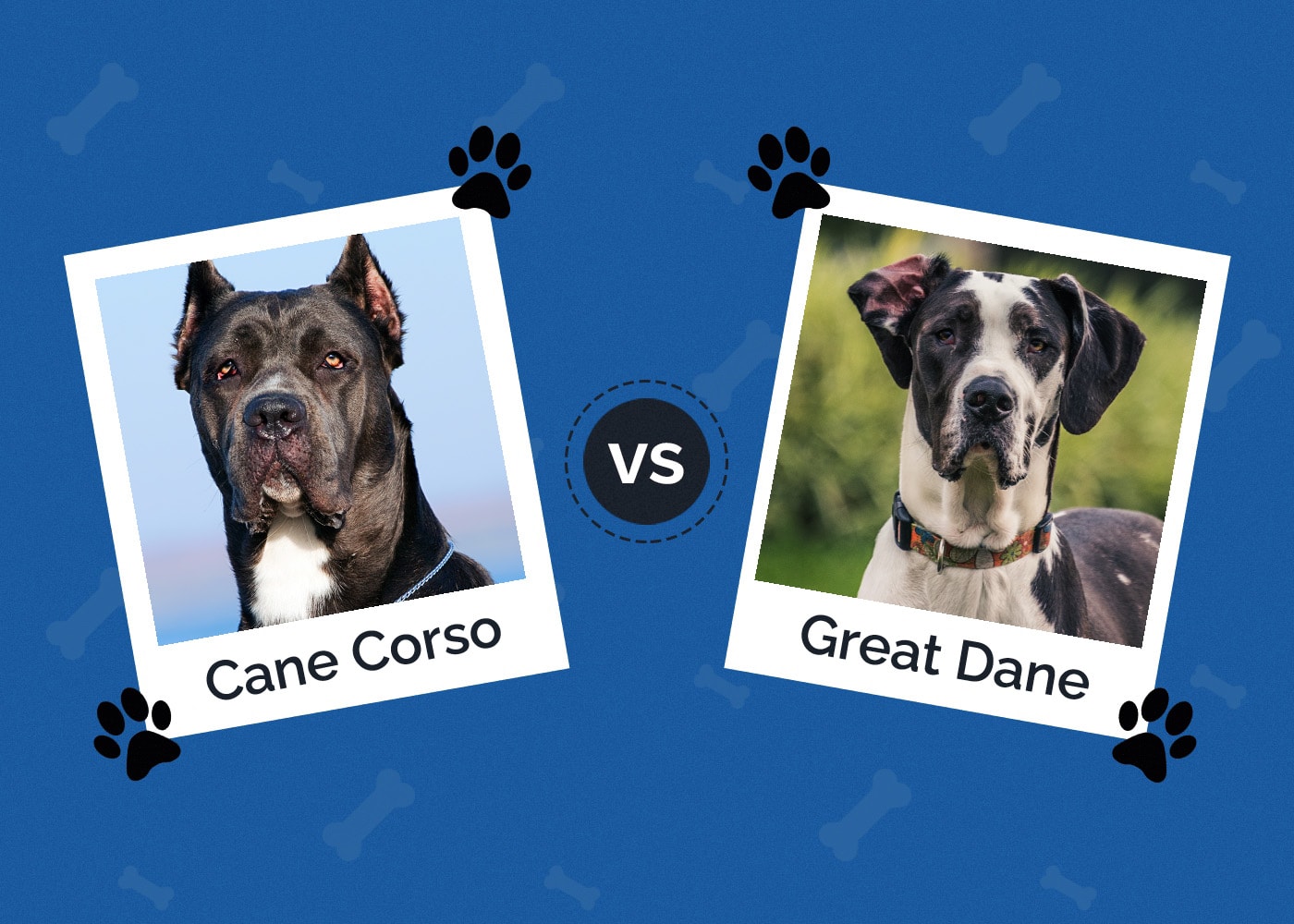
The Cane Corso and Great Dane are both giant, powerful dog breeds that are often likened to one another. Many people even confuse these two big dog breeds because of their size and external resemblances. Future dog owners ought to be mindful of the differences between the two breeds, especially when it comes to their temperament. Choosing the incorrect breed can result in a dog unsuited for their new family.
The American Kennel Club (AKC) classifies both dogs as large working dogs. Due to their high energy levels, neither are suitable for apartment living. Due to their size, both have been used as guard dogs, but in personality, they are quite different. Let’s take some time to examine some of the major contrasting characteristics between these two popular breeds.
Visual Differences
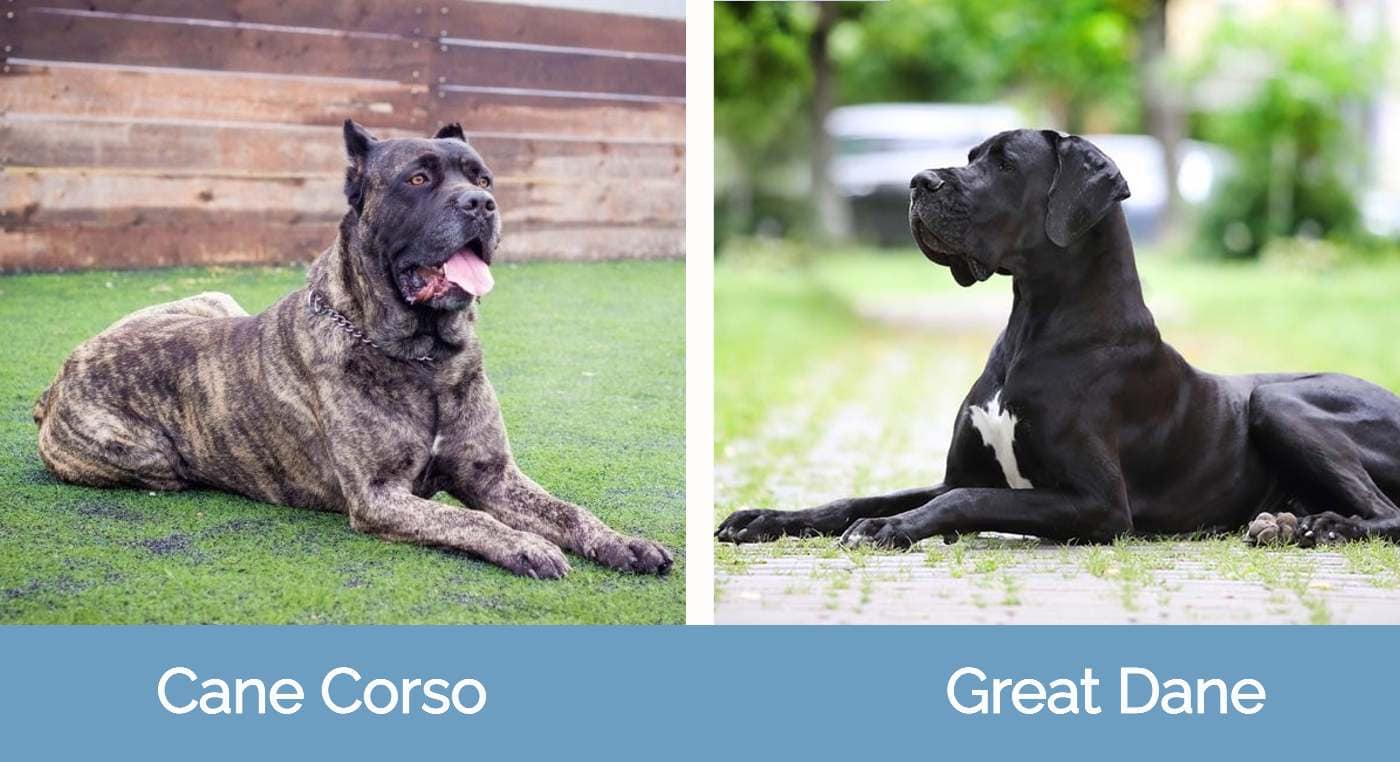
At a Glance
- Average height (adult): 24–28 inches (male), 23–26 inches (female)
- Average weight (adult): 99–110 pounds (male), 88–99 pounds (female)
- Lifespan: 9–12 years
- Exercise: 2+ hours a day
- Grooming needs: Low
- Family-friendly: Yes, if well socialized
- Other pet-friendly: Yes, if very well trained
- Trainability: Intelligent and responsive, but dominates inexperienced owners
- Average height (adult): 30–35 inches (male), 28–33 inches (female)
- Average weight (adult): 140–180 pounds (male), 110–140 pounds (female)
- Lifespan: 8–10 years
- Exercise: 1+ hours a day
- Grooming needs: Low
- Family-friendly: Yes
- Other pet-friendly: Mostly
- Trainability: Intelligent, but slightly more stubborn than Corsos
Cane Corso Overview
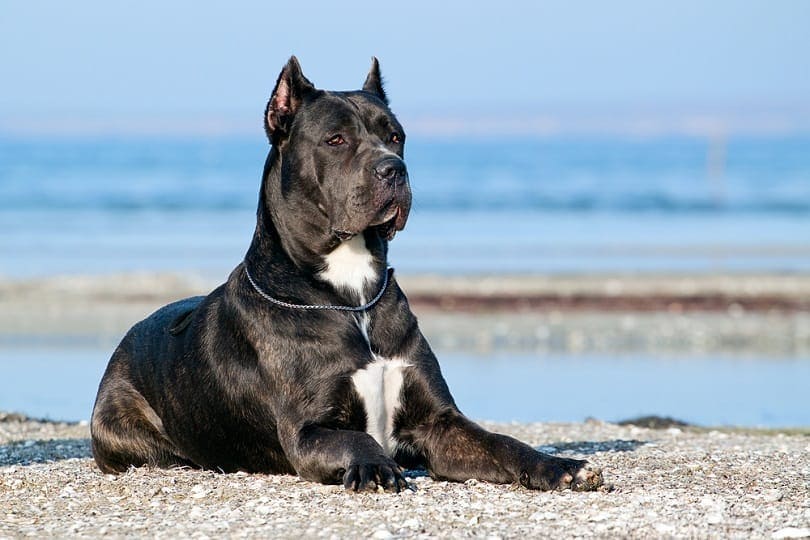
The Cane Corso is a large and imposing dog breed that originates from Italy. The breed is closely related to the Neapolitan Mastiff and was originally used for personal protection, hunting, and as a working dog. Today, the Cane Corso is still used for these purposes but is also becoming increasingly popular as a family pet. An intelligent and loyal breed that makes an excellent guard dog, they are quick learners and easily trained. However, their size and strength mean they require an experienced owner who can provide firm training and socialization from an early age.
Personality
Despite their intimidating size, they are known for being gentle and affectionate with their families, though distant with strangers. Cane Corsos are quick to learn new commands, however, they are also very loyal to their owners and will protect them from any perceived threats. These instincts toward obedience and protectiveness can clash and sometimes lead to aggression towards strangers if not properly handled from puppyhood.
Exercise
The Cane Corso is a very active breed, and they need plenty of exercise to stay healthy and happy. Two daily mile-long walks—or runs—is a good start for exercising your Cane Corso, but this breed needs more than just a few minutes of walking. If you don’t have a lot of room for your dog to run around, consider taking them to a dog park or signing up for doggy daycare. Exercise is important for all dogs, but it’s especially important for the Cane Corso.
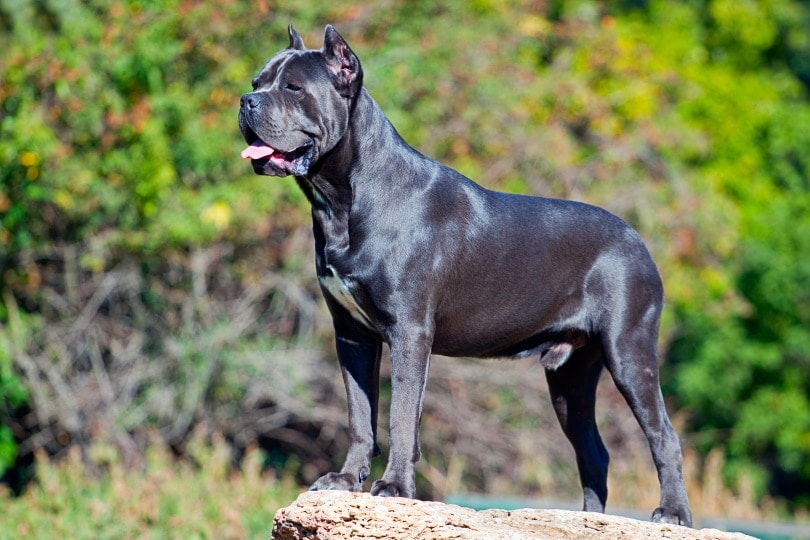
Training
Cane Corsos require firm, consistent training from an experienced owner. Training a Cane Corso can be challenging, but with patience and persistence, it is possible to instill good manners and obedience in this powerful breed. Crate training and positive reinforcement are often key in successfully potty training a young Cane Corso. With the proper care and training, the Cane Corso can make a loving, devoted companion for life.
Health & Care
The Cane Corso is a relatively healthy breed, but there are some health conditions that owners should be aware of. These include hip dysplasia, elbow dysplasia, and eye problems. The Cane Corso is also prone to weight gain, so owners need to make sure they provide their dogs with a sufficient amount of exercise. To help keep your Cane Corso healthy, make sure to feed them a high-quality diet and take them for regular checkups with the vet. Caring for a Cane Corso can be challenging because of their size and strength. With proper care and nutrition, the Cane Corso can live a long and happy life.
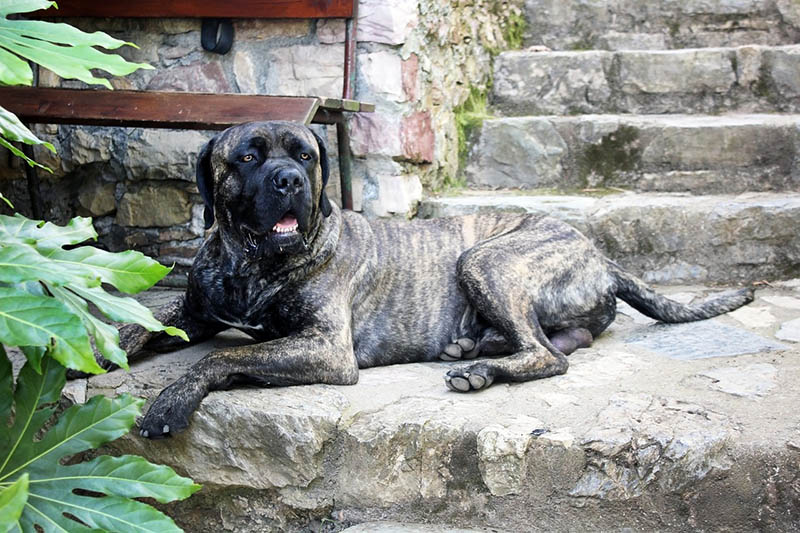
Suitable For
As a strong and fierce dog breed, the Cane Corso is not suitable for beginner dog owners. This breed requires an experienced owner who can provide rigorous, consistent training and socialization. The Cane Corso is a faithful and protective breed but can be aggressive if not properly trained and socialized. If you are a competent and experienced dog owner looking for a big, tough, and protective dog breed, the Cane Corso may be the right choice for you. While the Cane Corso can be an excellent family pet, it is important to note that this breed requires firm handling and needs to be gently introduced and made comfortable with a wide range of stressors from an early age. With proper care and training, the Cane Corso can make an excellent addition to a home.
Great Dane Overview
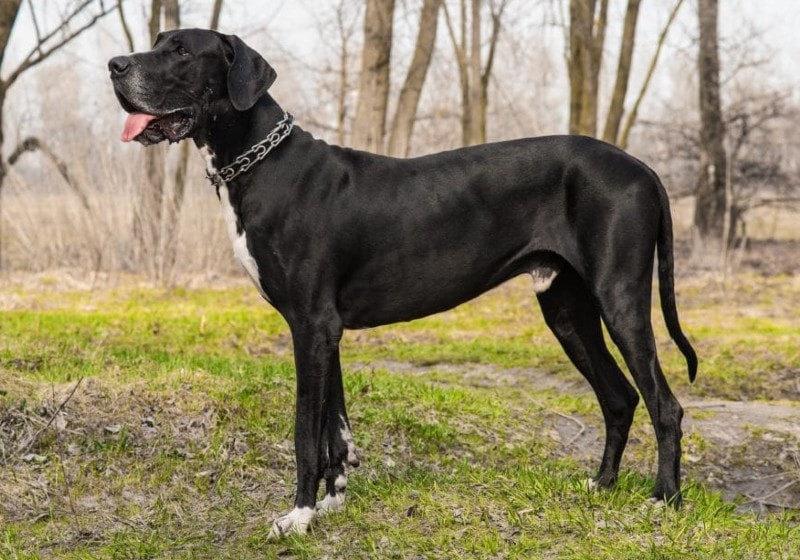
The Great Dane is a large breed of domestic dog known for its giant size. The breed is also known as the Deutsche Dogge, or German Mastiff. It is sometimes referred to as the “Apollo of all dogs” due to its impressive size and regal appearance. The official record holder for the tallest dog ever is a Great Dane called Zeus, who measured 44 inches from paw to shoulder. Great Danes are very gentle, loving, and loyal companions. They are among the most popular breeds of dogs in the United States.
Personality
Great Danes are gentle giants who make great family pets. They are loyal and affectionate and love to be around their special people. Despite their enormous size, they are relatively easy to train and make great companion animals. They are also known to be very protective of their owners and homes, though they tend to be less aggressive than the Cane Corso. If you’re looking for a big dog with a lot of personality, the Great Dane is the perfect breed for you!
Exercise
Despite their size, Great Danes are relatively inactive indoors and do not require a lot of exercise. However, they do need some daily activity to stay healthy and happy. A short walk or play session will suffice, but they will also enjoy a more vigorous game of fetch or tug-of-war.
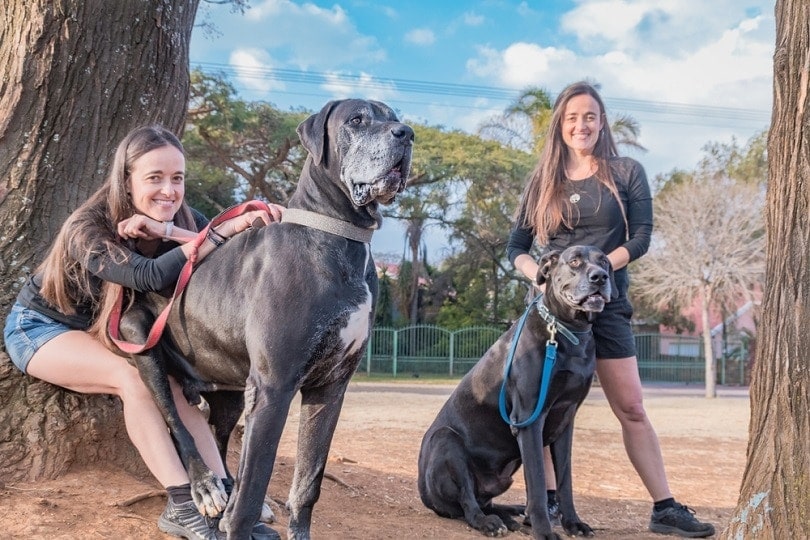
Training
The Great Dane is a massive and physically impressive breed of dog. They are gentle giants but can be headstrong if not properly trained. Training a Great Dane requires patience and consistency. Start training your Great Dane as early as possible, using positive reinforcement techniques such as treats and praise. Socialize your dog early on, so they learn to interact well with other people and animals. With proper training, your Great Dane can become a well-mannered companion that you will enjoy for many years to come.
Health & Care
This breed is prone to certain health problems, such as hip dysplasia, which can be painful and debilitating. They can also suffer from bloat and cardiac issues. Great Danes also have a shorter lifespan, averaging just 8 years. While this may seem short, it is actually not unusual for giant breeds like the Great Dane. They also have a short coat that doesn’t require much grooming, but regular brushing will help remove dead hair and keep their skin healthy. Like all dogs, Great Danes need regular checkups with a veterinarian to make sure they’re up to date on vaccinations and free of parasites. Proper care and attention will ensure that your Great Dane lives a fulfilling life.
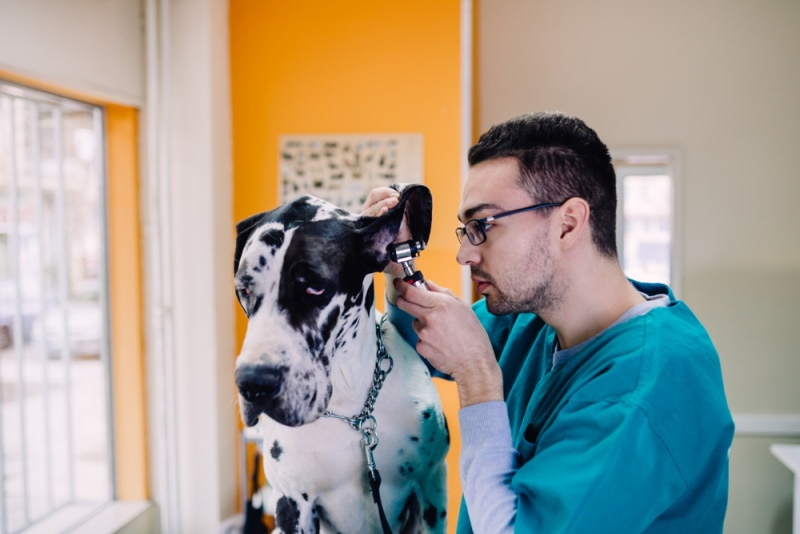
Suitable For
Despite their large size, Great Danes are gentle giants and make great family pets. They are patient and good-natured with children and get along well with other dogs and animals. However, their size can be intimidating to some people, so they may not be the best choice for everyone. Great Danes require exercise and space to roam around. They are not suited for apartment living or small homes without a yard. If you have the space and can provide them with plenty of exercise, a Great Dane may be the perfect pet for you!
Which Breed Is Right for You?
When it comes to choosing a large breed dog, there are many things to consider. Two popular choices are the Cane Corso and the Great Dane. Both breeds have their own unique set of qualities that make them great companions, but which one is right for you?
First, think about your experience with dogs. If you’re a first-time dog owner, a Corso may be too much to handle. It is not fair to the dog, to other dogs, or to humans outside your family to choose a breed like the Corso—capable of aggression and dominating their owners—unless you have experience in training and socializing dogs.
The Cane Corso is known for being loyal and protective of its family. If you’re looking for a guard dog or a companion to take on hikes and runs with you, the Cane Corso may be a good choice. The Great Dane, on the other hand, is a gentle giant. This breed is known for being affectionate and good with children. If you’re looking for a laid-back companion to cuddle with on the couch, the Great Dane may be a better fit for you. Both these breeds are large, but the Cane Corso is slightly smaller than the Great Dane. If size is an important factor for you, then the Cane Corso may be the better choice.
Again, both breeds need plenty of exercise, but the Cane Corso is generally more active than the Great Dane. If you’re looking for a dog that will keep up with your active lifestyle, then the Cane Corso may be a better choice.
See Also:
- Cane Corso vs Neapolitan Mastiff: Which One Is Right for Me?
- Cane Corso vs Doberman: The Key Differences
Featured Image Credit: (L) Sbolotova, Shutterstock | (R) Earl Wilkerson, Shutterstock


